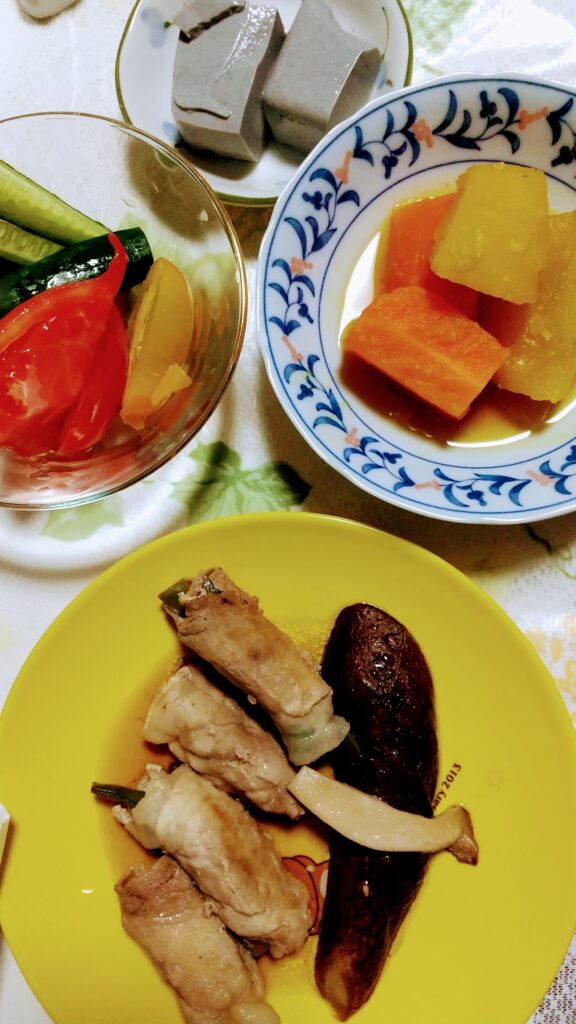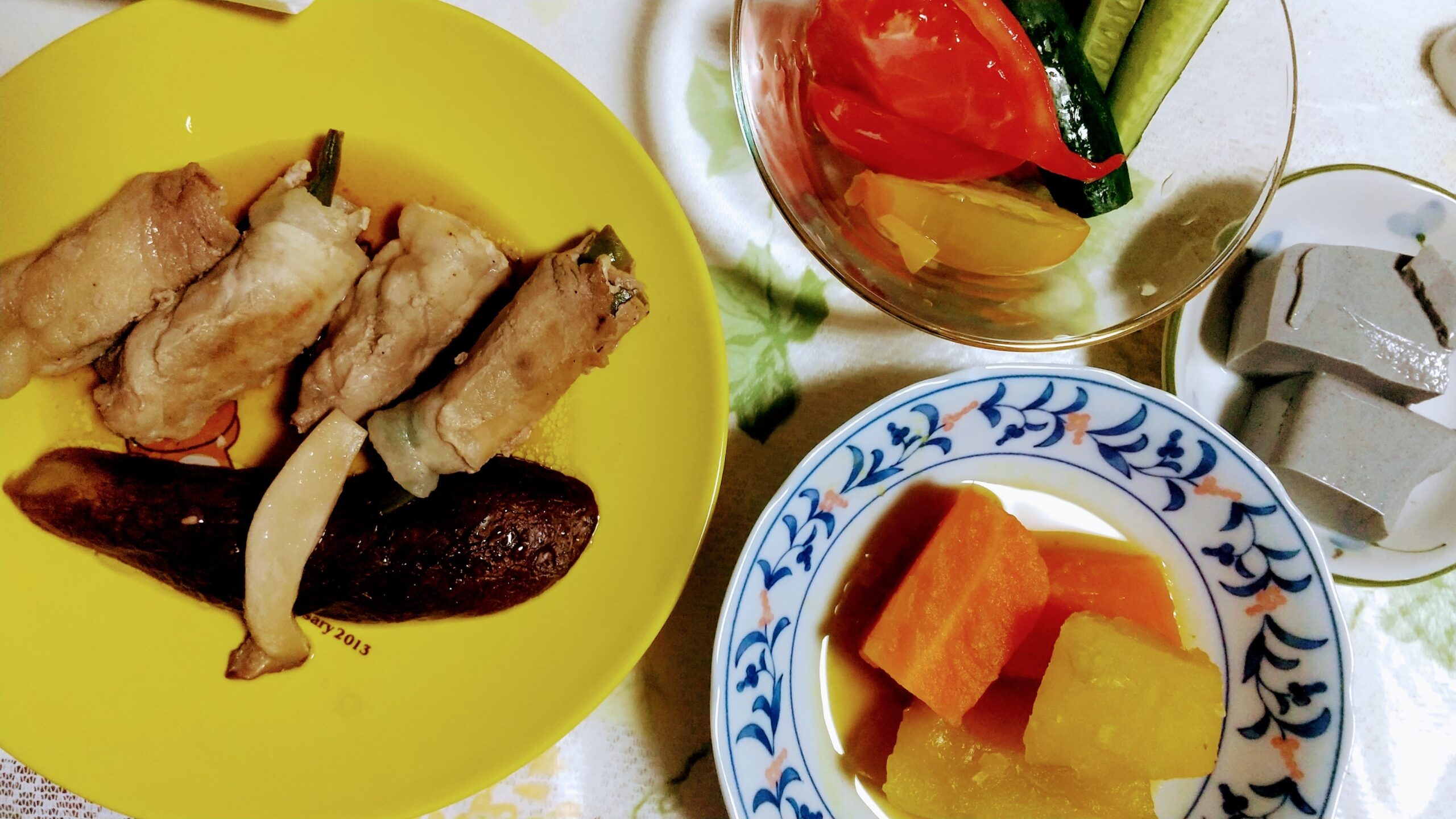
- ご飯(写真に写ってません)
- 人参とじゃがいもの煮物
- 胡麻豆腐
- トマト
- キュウリ
- ナスとキノコのソテー
- インゲンと榎茸の肉巻き
Rice (not shown in the photo)
Boiled carrots and potatoes
Sesame tofu
tomato
cucumber
Sauteed eggplant and mushrooms
Meat rolls of green beans and flammulina fili
日本ではどちらかというと牛肉の値段が高いので、肉を買うときは豚肉や鶏肉を選びがちです。身体に(消化器官に)合わなくて、牛肉は重いという人もいます。年齢を重ねるとともに牛肉が食べられなくなる人もいます。日本全国で養豚が流行したのは1871年(明治4年)から2年間です。クマタモが住んでいる地域は、牛舎も養豚場も養鶏場も全部近くにあるようで、風にのってそれぞれの臭いがやってきます。本当に臭いです。場所も知らないのに、それぞれ何の臭いか判別できるので相当強烈です。しかし、それらの農家さんのおかげで食卓が支えられているので今日も感謝をしていただくのみです。『いただきます』※いただきますとは、ご飯を食べる前に発する感謝の言葉です。食べ終わったら『ごちそうさま』と言います。こちらも感謝の言葉です。
Beef is rather expensive in Japan, so when we buy meat, we tend to choose pork or chicken. Some people say that beef is heavy because it doesn’t fit the body (digestive system). As we get older, some people can no longer eat beef. Pig farming became popular all over Japan for two years from 1871 (Meiji 4). In the area where Kumatamo lives, it seems that the barn, pig farm, and poultry farm are all nearby, and each smell comes along with the wind. It really smells. Even though I don’t know the location, it’s quite intense because I can tell what the smell is. However, thanks to those farmers, the dining table is supported, so I would like to thank you again today. “Itadakimasu=I will” * “Itadakimasu” is a word of gratitude that is given before eating rice. When you finish eating, say “Gochisousama=Feast”. This is also a word of gratitude.




コメント